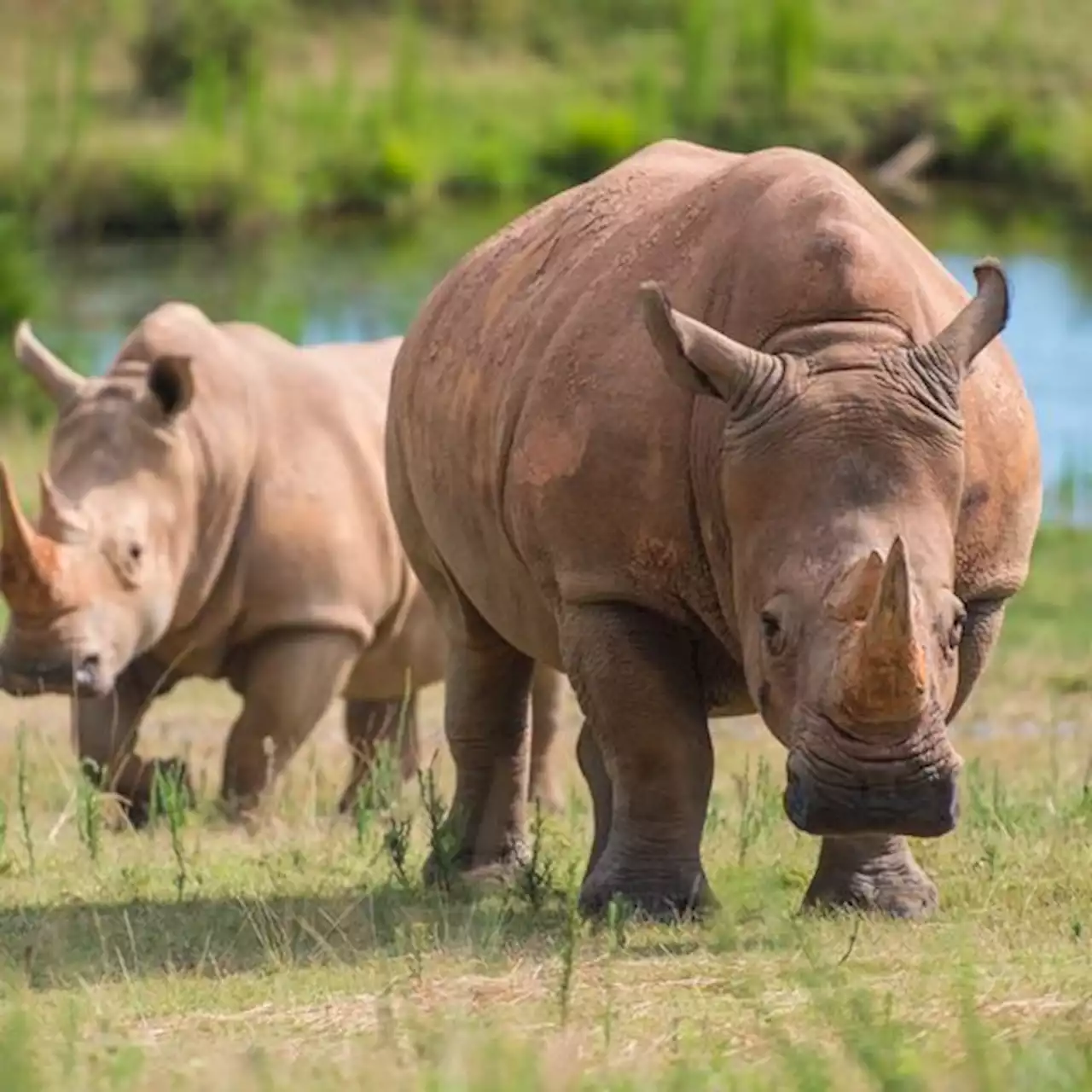The meerkats were named Nkosi, Lula, Nya, Kgala, and Ari and came to the zoo as a group of siblings in 2013. Zoo officials said they use dye to mark the animals so they can differentiate between them, but sadly the toxin in the dye led to their death.
Five meerkats have died mysteriously at a Philadelphia zoo after being exposed to an unknown toxin from a dye used to mark the animals.The meerkats - named Nkosi, Lula, Nya, Kgala, and Ari - came to the zoo as a group of siblings in 2013.
As a way of differentiating the animals, zoo officials use dye to mark them, according to Rachel Metz, the zoo's vice president of animal well-being. She said the zoo has been using the same dye - called Nyanzol-D - for more than three decades without incident."We've been implementing a robust internal and external fact-finding mission."The dye was used on the meerkats 1 June , and shortly after, one of them was found dead about 30 minutes later, officials said.The four others started showing signs of acute illness minutes later, so veterinary staff anesthetised them and started to pump their stomachs.
She added:"Our staff spend more time with these animals than they do with their own families or even their pets at home. "So there's a real legitimate bond they feel with the animals, and obviously, they're devastated right now."
Ireland Latest News, Ireland Headlines
Similar News:You can also read news stories similar to this one that we have collected from other news sources.
 Five meerkats dead in suspected dye poisoning at Philadelphia ZooOfficials say a substance used to mark them might be to blame for the deaths at Philadelphia Zoo.
Five meerkats dead in suspected dye poisoning at Philadelphia ZooOfficials say a substance used to mark them might be to blame for the deaths at Philadelphia Zoo.
Read more »
 The Climate Story Behind the Philadelphia I-95 Bridge CollapseTanker trucks transporting fossil fuels are 'rolling bombs' that pose an ongoing danger, environmentalists warn. The climate story behind the Philadelphia I-95 bridge collapse:
The Climate Story Behind the Philadelphia I-95 Bridge CollapseTanker trucks transporting fossil fuels are 'rolling bombs' that pose an ongoing danger, environmentalists warn. The climate story behind the Philadelphia I-95 bridge collapse:
Read more »
 Jimmy's Farm: Devastating' burglary at TV presenter's farm in SuffolkTools are stolen and damage is caused at Jimmy's Farm, where a new zoo development is being built.
Jimmy's Farm: Devastating' burglary at TV presenter's farm in SuffolkTools are stolen and damage is caused at Jimmy's Farm, where a new zoo development is being built.
Read more »
 Effects of age, seasonality, and reproductive status on the gut microbiome of Southern White Rhinoceros (Ceratotherium simum simum) at the North Carolina zoo - Animal MicrobiomeBackground Managed southern white rhinoceros (Ceratotherium simum simum) serve as assurance populations for wild conspecifics threatened by poaching and other anthropocentric effects, though many managed populations experience subfertility and reproductive failure. Gut microbiome and host health are inextricably linked, and reproductive outcomes in managed southern white rhinoceros may be mediated in part by their diet and gut microbial diversity. Thus, understanding microbial dynamics within managed populations may help improve conservation efforts. We characterized the taxonomic composition of the gut microbiome in the managed population of female southern white rhinoceros (n = 8) at the North Carolina Zoo and investigated the effects of seasonality (summer vs. winter) and age classes (juveniles (n = 2; 0–2 years), subadults (n = 2; 3–7 years), and adults (n = 4; |7 years)) on microbial richness and community structure. Collection of a fecal sample was attempted for each individual once per month from July-September 2020 and January-March 2021 resulting in a total of 41 samples analyzed. Microbial DNA was extracted and sequenced using the V3-V4 region of the 16S rRNA bacterial gene. Total operational taxonomic units (OTUs), alpha diversity (species richness, Shannon diversity), and beta diversity (Bray-Curtis dissimilarity, linear discriminant analysis effect size) indices were examined, and differentially enriched taxa were identified. Results There were differences (p | 0.05) in alpha and beta diversity indices across individuals, age groups, and sampling months. Subadult females had higher levels of Shannon diversity (Wilcoxon, p | 0.05) compared to adult females and harbored a community cluster distinct from both juveniles and adults. Samples collected during winter months (January-March 2021) possessed higher species richness and statistically distinct communities compared to summer months (July-September 2020) (PERMANOVA, p | 0.05). Reproductively active (n
Effects of age, seasonality, and reproductive status on the gut microbiome of Southern White Rhinoceros (Ceratotherium simum simum) at the North Carolina zoo - Animal MicrobiomeBackground Managed southern white rhinoceros (Ceratotherium simum simum) serve as assurance populations for wild conspecifics threatened by poaching and other anthropocentric effects, though many managed populations experience subfertility and reproductive failure. Gut microbiome and host health are inextricably linked, and reproductive outcomes in managed southern white rhinoceros may be mediated in part by their diet and gut microbial diversity. Thus, understanding microbial dynamics within managed populations may help improve conservation efforts. We characterized the taxonomic composition of the gut microbiome in the managed population of female southern white rhinoceros (n = 8) at the North Carolina Zoo and investigated the effects of seasonality (summer vs. winter) and age classes (juveniles (n = 2; 0–2 years), subadults (n = 2; 3–7 years), and adults (n = 4; |7 years)) on microbial richness and community structure. Collection of a fecal sample was attempted for each individual once per month from July-September 2020 and January-March 2021 resulting in a total of 41 samples analyzed. Microbial DNA was extracted and sequenced using the V3-V4 region of the 16S rRNA bacterial gene. Total operational taxonomic units (OTUs), alpha diversity (species richness, Shannon diversity), and beta diversity (Bray-Curtis dissimilarity, linear discriminant analysis effect size) indices were examined, and differentially enriched taxa were identified. Results There were differences (p | 0.05) in alpha and beta diversity indices across individuals, age groups, and sampling months. Subadult females had higher levels of Shannon diversity (Wilcoxon, p | 0.05) compared to adult females and harbored a community cluster distinct from both juveniles and adults. Samples collected during winter months (January-March 2021) possessed higher species richness and statistically distinct communities compared to summer months (July-September 2020) (PERMANOVA, p | 0.05). Reproductively active (n
Read more »
